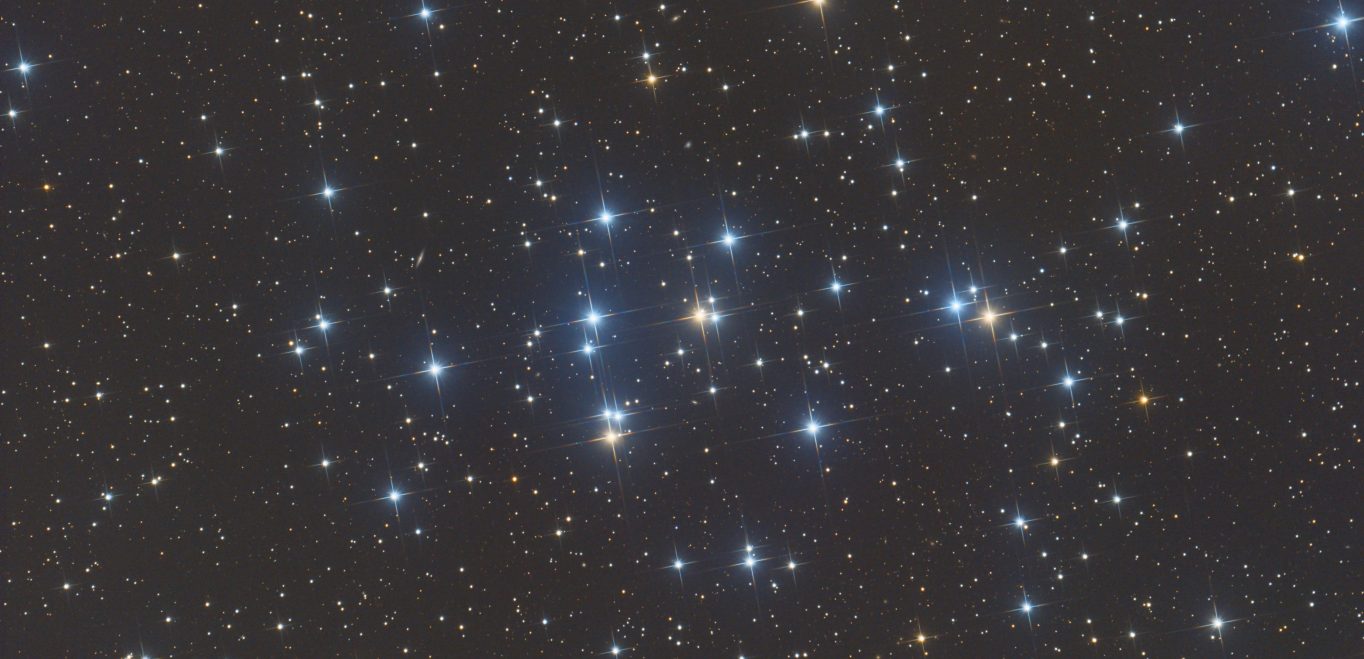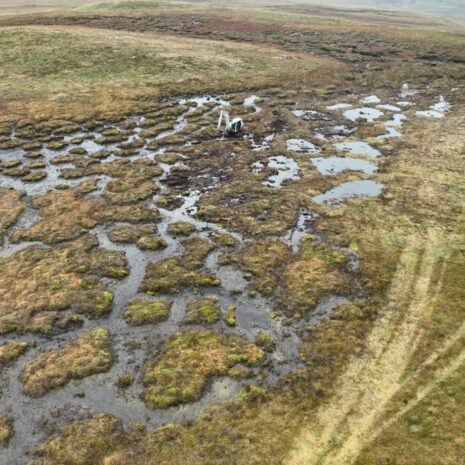Welcome to this month’s update to what’s in the night sky for April.
In the Elan Valley International Dark Sky Park, darkness falls at around 7.45pm at the beginning of the month and 9.45pm at the end.
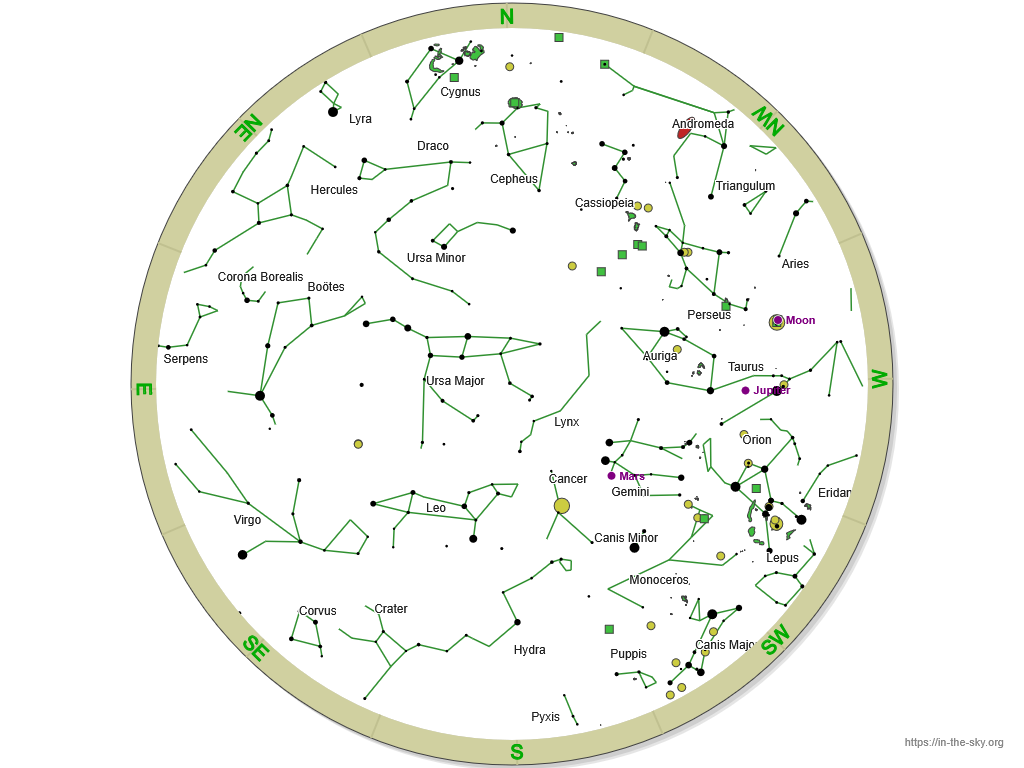
An all-sky view of the constellations from 10pm in April from in-the-sky.org
Facing south at 10pm, you will see the constellations of Hydra, Leo and Cancer, Ursa Major sits very high at the zenith and the glittering winter constellations of Orion, Taurus and Auriga sets in the west. Virgo and Boötes lie in the east, with the summer constellations of Hercules, Corona Borealis and Lyra lie low on the eastern horizon.
The Full Moon occurs on 13th April and New Moon on 27th April.
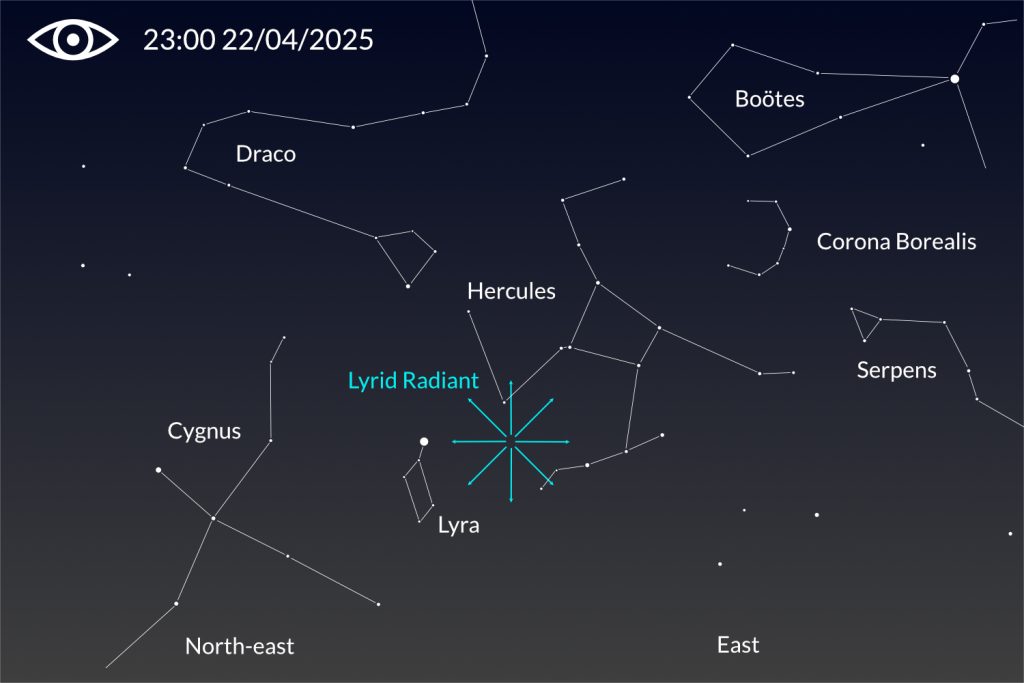
Lyrid Meteor Shower
The Lyrid Meteor Shower falls between 16th and 25th April, peaking on the evening of 22nd April.
Even though it isn’t the most impressive show, it is worth looking up during the meteor shower’s duration to spot the shooting stars as they tend to have bright dust trails that remain visible in the sky for a few seconds.
The Moon’s light will not interfere as it will be below the horizon. This meteor shower is caused by the debris left behind by the long-period Comet C/1861 G1 Thatcher. This comet was first seen by Chinese court astronomers in 687BC.
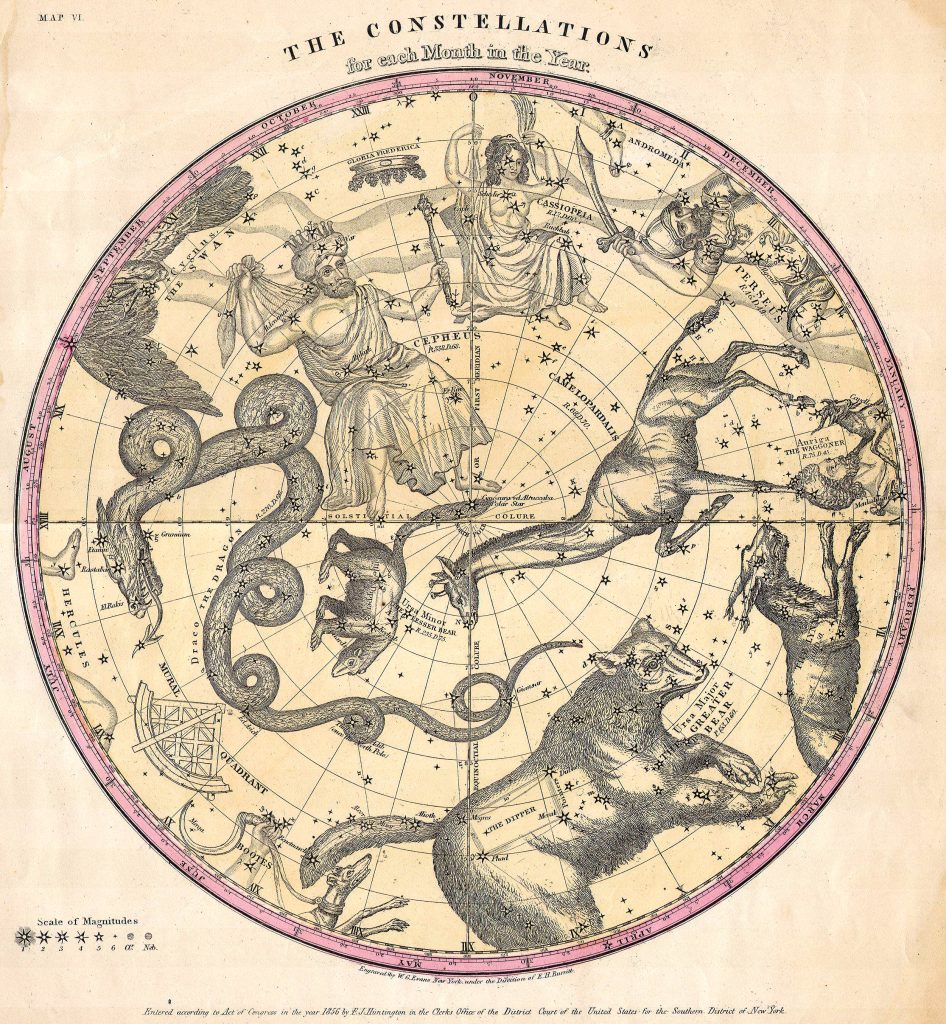
Constellation of the Month
Each month, we will feature a constellation and the mythology behind it.
There are 88 IAU recognised constellations in the night sky and around 36 that are observable in the northern hemisphere. Some of the names of the 88 IAU recognised constellations are several thousands of years old.
With the advent of science and rational thinking, and more of a focus on the observable world, stars are no longer used for the farming calendar, for navigation or conveying social or religious values.
So get outside and see if you can spot these constellations. The best time to see each constellation we feature is around 90 minutes after sunset.
Constellation of the Month – Ursa Minor
One often overlooked constellation is Ursa Minor, which is placed high in the night sky during the spring months. It resembles a smaller ‘pan and handle’ version to Ursa Major (or big dipper). Ursa Minor has a special star called Polaris, which is currently our Pole Star – located near the North Celestial Pole.
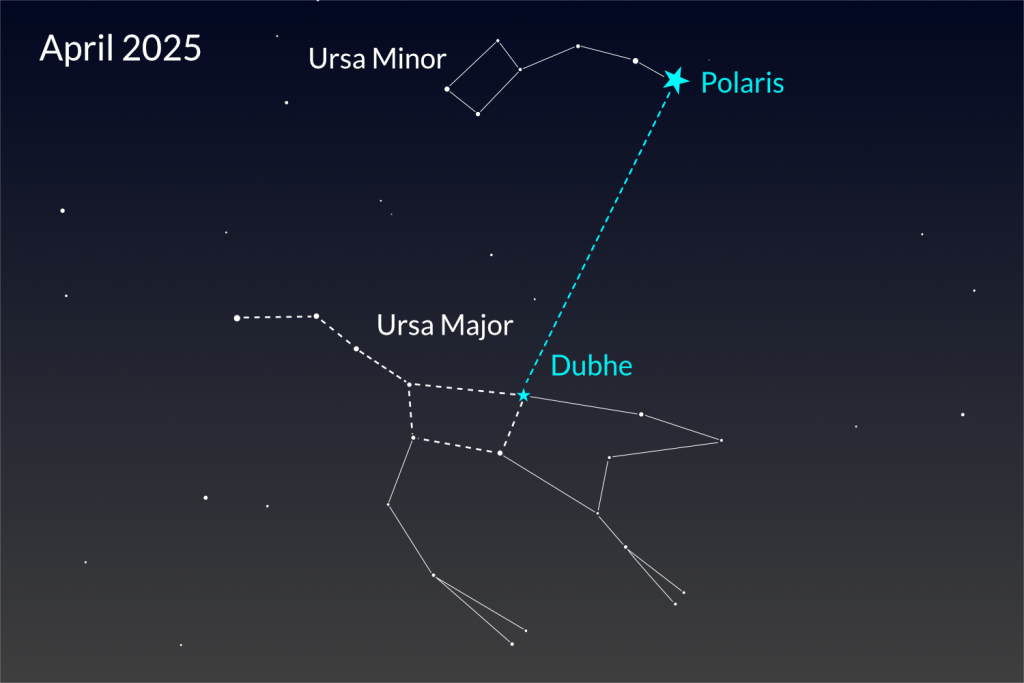
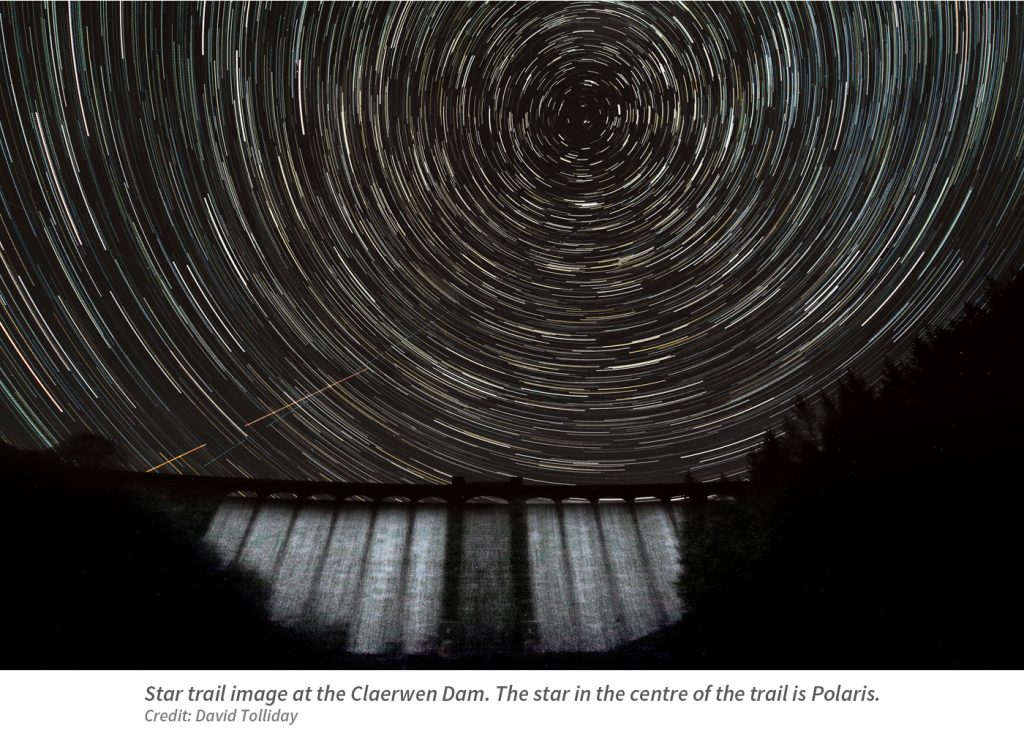
It’s useful to know where this star is for people who use equatorial tracking to follow objects in space – compensating for the rotation of the Earth. You can see evidence of this rotation by looking at star-trail images which contains multiple concentric circles leading to a central point. That point is the Pole Star, Polaris.
However, the ‘pole’ position changes every 26,000 years due to the Earth’s wobbling axis. That position was previously held by Thuban in the constellation of Draco until 500AD, which was during the fall of the Roman Empire and the beginning of the Medieval Age. In 3100AD, Gamma Cephei in Cepheus will become the next pole star.
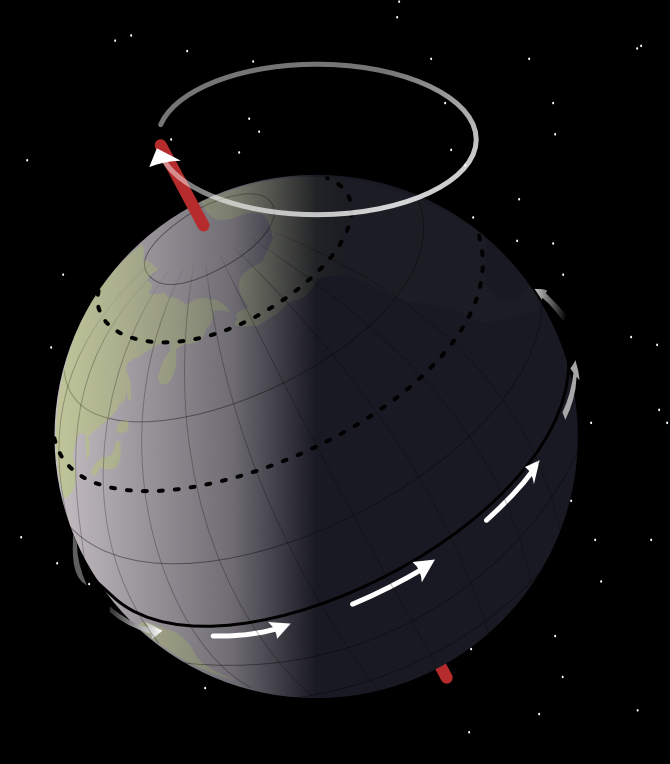

The constellation of Ursa Minor also has ancient mythologies associated with it.
One such story is that the constellation is Ida, the nymph who looked after the young Zeus on the island of Crete, whose life was threatened by King Cronus, his father. Cronus was troubled by a prophecy that foretold that one of his offspring would replace him as king, so he swallowed five of his children after they were born.
When Rhea, his wife, gave birth to Zeus, she gave him a stone wrapped up in swaddling clothes to swallow instead and sent Zeus into the care of Ida, who nursed him.
When he became an adult, he returned to his father’s home and tricked Cronus into taking an emetic, causing him to bring up his five siblings Hades, Poseidon, Hestia, Demeter, and Hera, who rose up and overthrew his kingdom.
The prophecy was fulfilled when Zeus became the new king of the Olympians and ‘god of the sky’.
Conjunction of the Moon, Venus and Saturn
Look out for a conjunction of the Moon, Venus and Saturn during dawn on 25th April.
Venus may have disappeared in the evening sky but it has not yet finished putting on a brilliant display. This month, Venus rises in the east from around 5.30am – and on 27th April, will reach peak brightness.
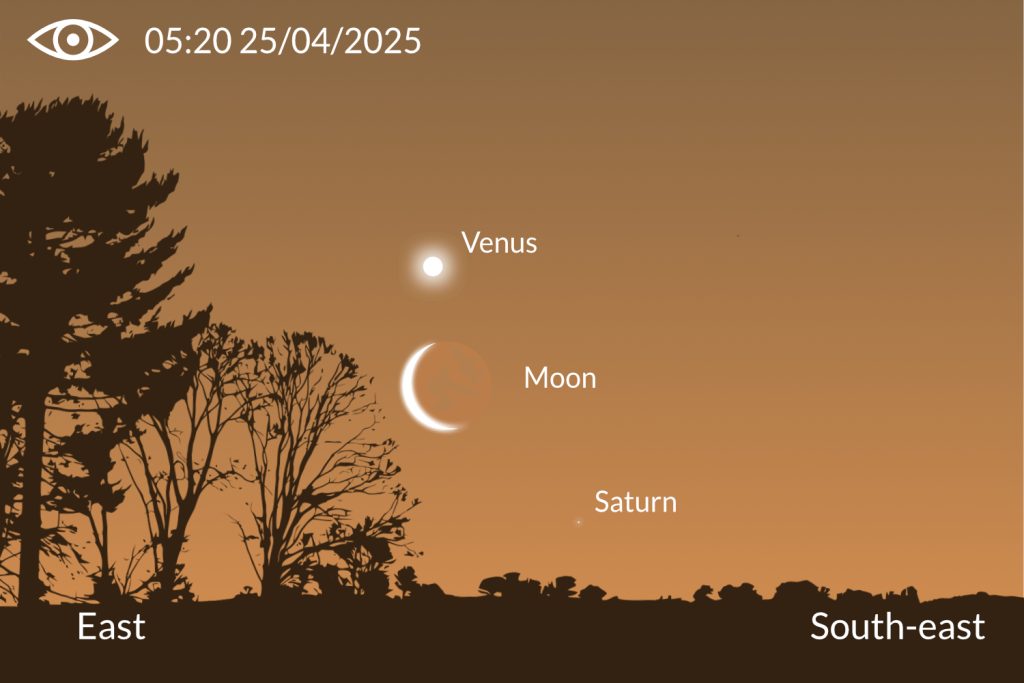
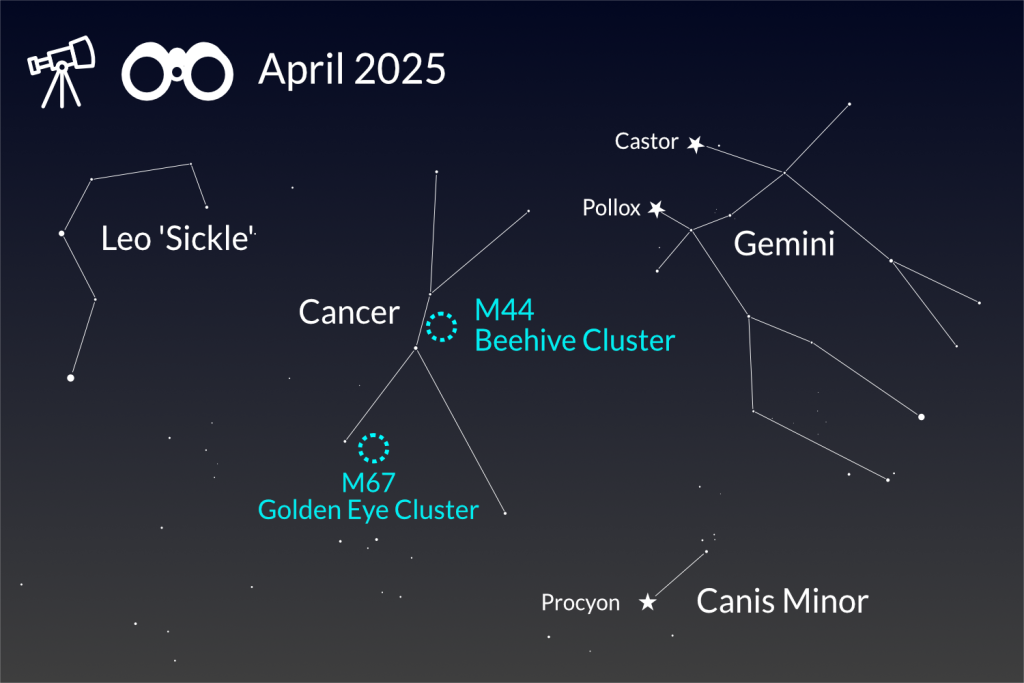
A Couple of Star Clusters
There are a few interesting deep sky objects to look out for in Ursa Major. You will need your binoculars or a telescope with an aperture of four inches and above to see them.
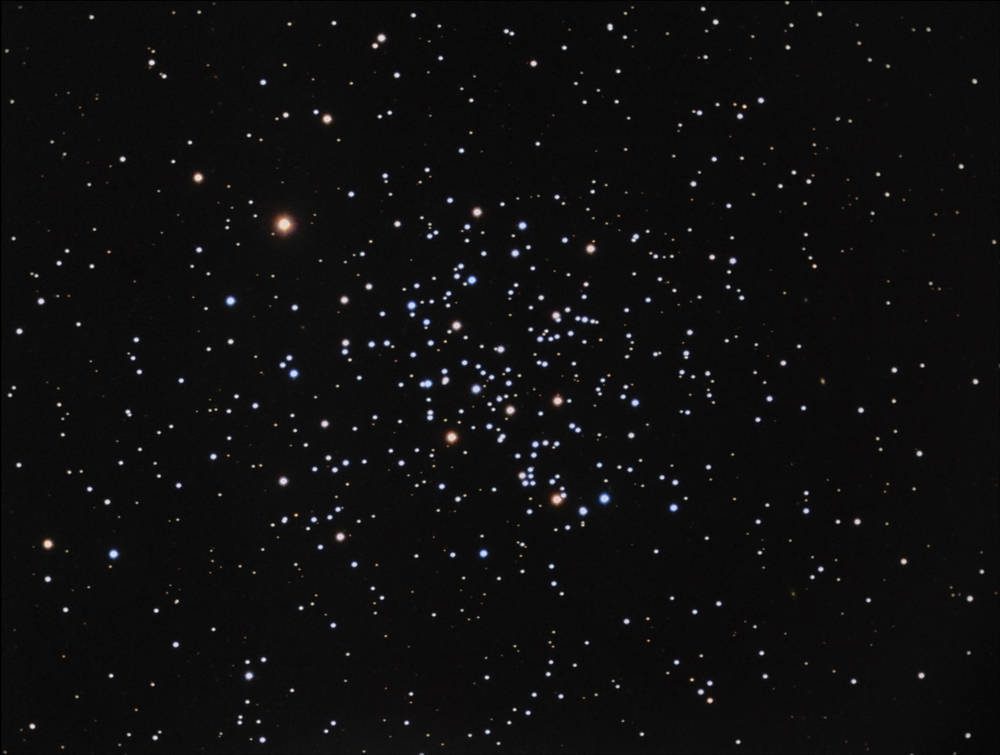
Messier 67
Coordinates: RA: 08h 51.4m | Dec: +11°49′
This open star cluster, comprising 500 stars, lies in the constellation of Cancer and is between 2.6 and 2.9 light years away. It can be seen as a dim, elongated fuzzy patch of light through 10×50 binoculars. Telescopes of 6 inches aperture and above reveals a dozen or so stars, whilst larger telescopes of 12 inches and above can reveal up to 100 stars.
By Jim Mazur CC BY-SA 4.0
It contains stars that are not hotter than spectral class F; being yellow/white in colour to the eye and at least 100 stars are similar in composition to our Sun.
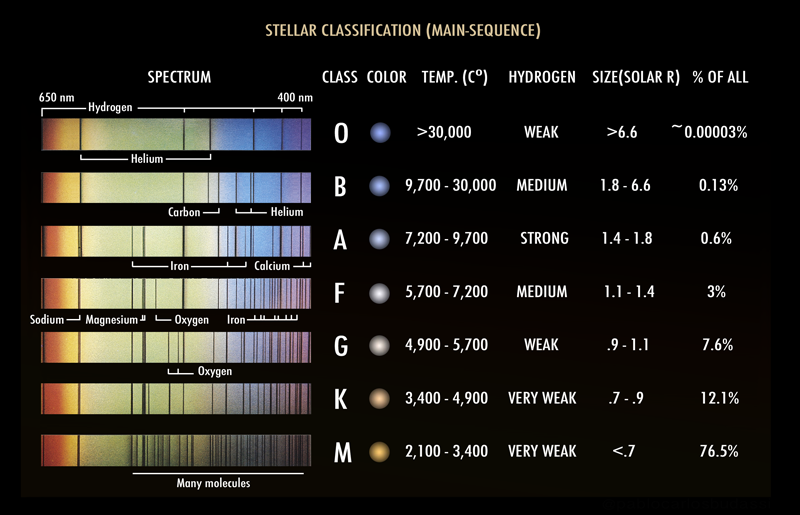
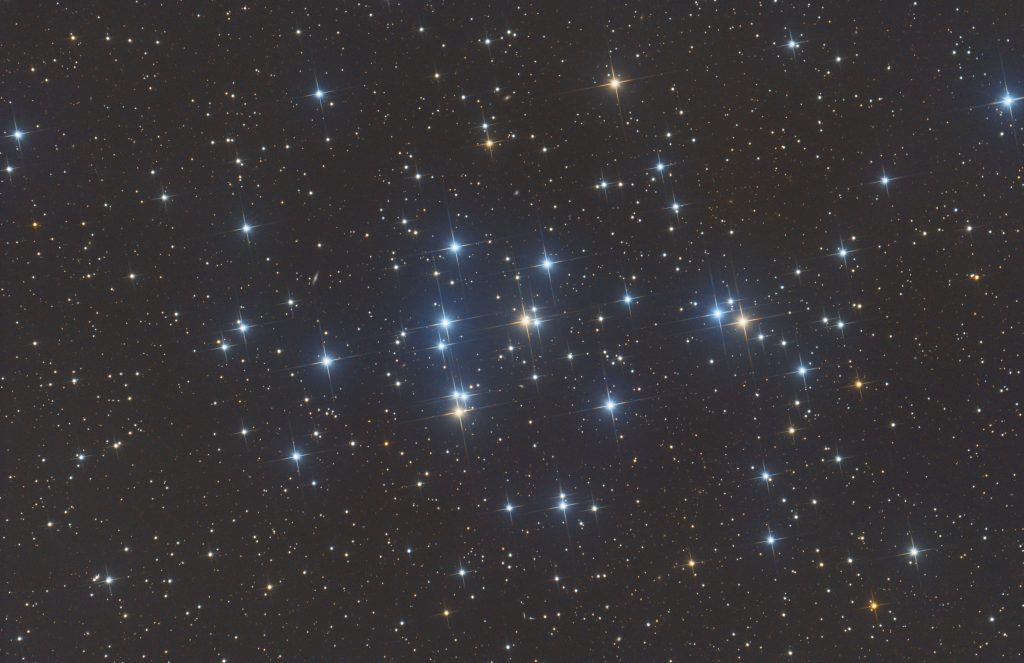
Messier 44 – Beehive Cluster
Coordinates: RA: 08h 40.4m | Dec: 19°59′
This pretty open star cluster can be seen with the unaided eye and lies in the constellation of Cancer. It is one of the closest open clusters, being around 577 light years distant.
Containing 1000 stars, many of them can be seen with optical equipment but this is one object that looks lovely through 10x binoculars and small telescopes.
In 2012, NASA-funded astronomers discovered two planets orbiting stars within this open cluster. These Jupiter-like planetary orbits were similar to the way that planets in our Solar System behaves and were the first extrasolar planets discovered to do so. Further investigations by the Kepler Space Telescope revealed that there were four more hit-Jupiter-like exoplanets orbiting stars in the Beehive Cluster. You can read more about it here.

